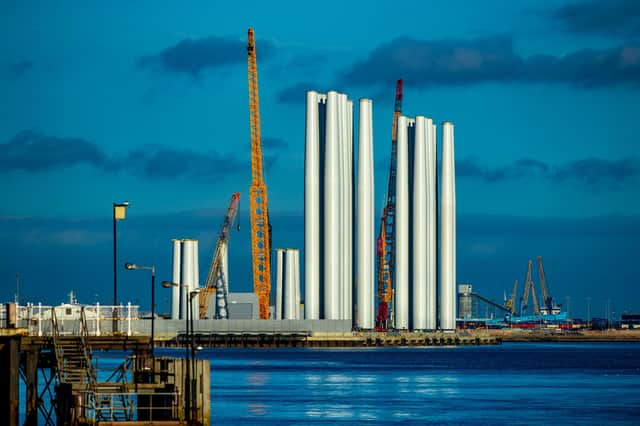Picture Post: Hull is leading the way with offshore wind energy


Siemens Gamesa, the world leader in the offshore wind industry, has a manufacturing factory based in Hull where it produces the giant blades for the gigantic offshore wind turbine towers which can be seen dominating the skyline on the edge of Alexandra Dock, Hull.
The demand for global electricity is forecast to increase and in the worldwide quest for more renewable energy sources, the rapid development of offshore wind power suggests this source will play a major part in the sector’s future.
Advertisement
Hide AdAdvertisement
Hide AdThe exponential growth of offshore wind energy can be attributed to several factors, including abundant space and greater, consistent wind resources, as well as technological advantages for offshore wind with high availability and capacity factors.
A record 5GW plus of offshore wind capacity was installed during 2020, bringing the global operational offshore wind capacity to greater than 33GW, keeping growth on track despite challenges caused by Covid-19.
Last year saw the implementation of 15 new power plants, meaning that there are now more than 160 operational offshore powerplants around the world.
The UK remains the world’s biggest market with over 10 GW installed capacity, followed by Germany with around 8 GW and China currently in third place with approximately 7 GW installed.
Advertisement
Hide AdAdvertisement
Hide AdThis growth in offshore wind is predicted to accelerate over the coming years, with a global outlook of around 200 GW predicted installations by 2030.
This is further enhanced by over 30 GW of new capacity expected to be allocated in the coming years.
Innovative new ventures such as green hydrogen and floating offshore wind will help to decarbonize hard-to-abate sectors and allow the expansion of new markets previously limited by geographical conditions, indicating a bright future ahead for offshore wind.
It’s a future that Hull and indeed Yorkshire, can play a leading part in.
Technical details: Nikon D4 camera, 300mm lens with a Nikon 1.4 teleconverter, 1/1250th second at f/5.6, ISO 100.
Comment Guidelines
National World encourages reader discussion on our stories. User feedback, insights and back-and-forth exchanges add a rich layer of context to reporting. Please review our Community Guidelines before commenting.